Great Sand Dunes National Park is located in southern Colorado. It is renowned for its colossal sand dunes, the largest in all of North America. These dunes cover an area of 30 sqmi, and the tallest ones reach heights of over 656 ft.
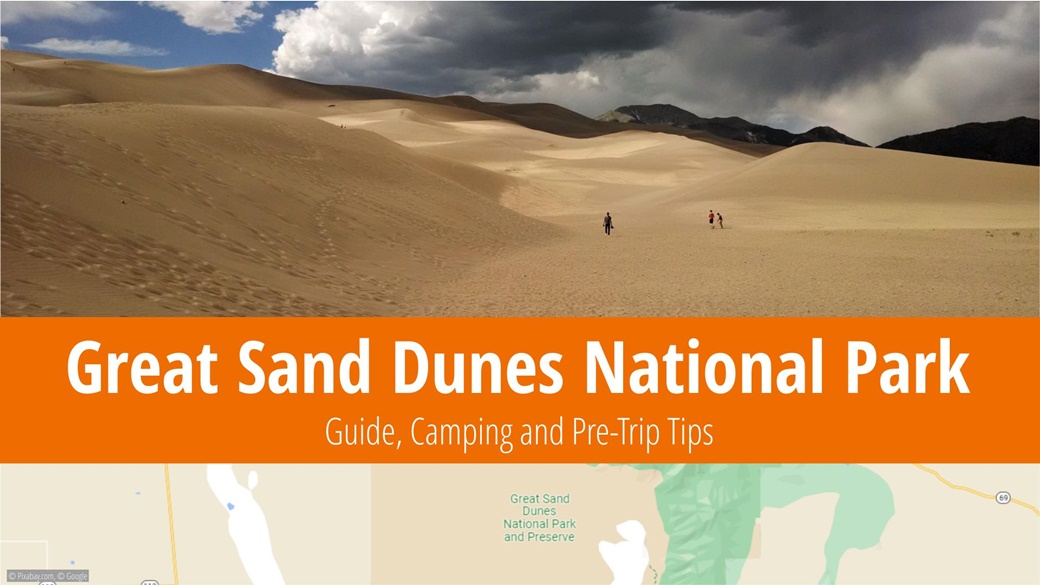
Table of Contents
- Information About Great Sand Dunes National Park
- What to See and Do in Great Sand Dunes National Park
- When to Visit Great Sand Dunes National Park
- Entrance Fees for the Great Sand Dunes National Park
- Directions to the Great Sand Dunes National Park
- Lodging at the Great Sand Dunes National Park
- Advice and Recommendations Before Visiting the Great Sand Dunes National Park
- Photos of the Great Sand Dunes National Park
Information About Great Sand Dunes National Park
The park is located in the San Luis Valley, less than a four-hour drive from Denver, Colorado. The area has been protected as a national monument since 1932, and it was expanded and upgraded to a national park on September 13, 2004. This change was primarily due to local efforts to increase the protection of the water supply located deep within the dunes.
The entire park spans 67 sqmi, less than half of which is covered by dunes and the rest by the Sangre de Cristo mountain range. Hundreds of additional kilometers of sand in the vicinity of the Great Sand Dunes National Park are not included within the park boundaries. In 2021, the park was visited by 602,613 people.
The highest point in the park is Tijeras Peak, standing at 13,609 ft, and the highest sand dune is Star Dune, reaching around 751 ft. However, this information should be taken with a grain of salt as the park is subject to strong winds and the dunes are constantly shifting, resulting in fluctuations in their height.
Great Sand Dunes National Park also draws the attention of mystery researchers, with over 60 UFO sightings reported in the area. In the 1970s, the region was struck by a notable wave of suspicious cattle deaths, and mutilated carcasses are still being discovered on ranches around the park today. Supporters of the paranormal attribute these deaths to UFOs.
It’s not just lizards, snakes, and similar desert creatures that inhabit the park. Bighorn sheep, bison, black bears, pikas, American cougars, beavers, and badgers also call this park home. Among birds, owls and eagles are naturally found in the park, as well as herons and peregrine falcons.
What to See and Do in Great Sand Dunes National Park
Great Sand Dunes National Park is all about immense sand formations – climbing them, sliding down them, or photographing them. In total, five of these dunes are at least 689 ft high, and a beautiful view of them, with the mountains in the background, can be seen from the visitor center.
There are no marked trails directly along the dunes. Most visitors set out to climb the 650 ft High Dune, which takes a good two hours. Less than 2 mi away is the aforementioned Star Dune. The round-trip hike up and down takes about five hours in total.
More fun than climbing the dunes is sliding down them on a sandboard or sledge. Snowboards, pieces of cardboard, or plastic sleds designed for snow don’t work on the sand. The equipment rental is right outside the park entrance. You can ski down the dunes anywhere in the park where there is no vegetation. Ideal conditions for sandboarding are in the early morning or evening in the summer. During the day, the sand temperature can reach up to 149 °F, which could be problematic if you fall. In spring and autumn, you can also ride during the day, but you must watch out for the wind and possible storms.
If you’ve had enough of the dunes and sand in your boots, you can take one of the several hiking trails. You can choose from forest trails and mountain trails, and the Montville Nature Trail is particularly recommended. This shaded trail leads through the forest to a summit, offering fine views of the sand dunes, valley, and 13,346 ft Mount Herard.
On a hot summer day, you can cool down in the shallow Medano Creek. There you can observe an interesting natural phenomenon where the flowing water creates underwater dunes that collapse and re-form due to water pressure.
Those who choose to spend the night in the park can take advantage of the minimal light pollution and watch the stars in the sky. From time to time, the park hosts group night sky watches organized by park rangers.
When to Visit Great Sand Dunes National Park
Great Sand Dunes National Park is open 24 hours a day, 365 days a year. The visitor center is only closed on winter public holidays.
March and April tend to be the months with the most snowfall in southern Colorado, which is usually short-lived. Temperatures in the higher elevations range between 32 °F and 59 °F, and in the lower ones between 1 °F and 39 °F. A visit can typically be spoiled by strong winds in the afternoon.
During the summer, temperatures generally hover around a stable 75 °F–81 °F, but the sand can reach scorching temperatures as high as 149 °F. Never visit the park during this season in open shoes only – always wear closed shoes. If you’re camping around the park, prepare with several layers of clothing, as it can get as cold as 39 °F at night.
Autumn typically offers warm temperatures with an Indian summer. Daytime temperatures usually range from 59 °F–77 °F, with nighttime temperatures dropping just below freezing. Be prepared for possible rain or snow showers.
Winter weather can be deceptive. While the sun shines, temperatures don’t rise above freezing. Snow showers or blizzards should not be a surprise.
Before visiting, I recommend checking the current weather forecast. It’s not advisable to visit the park during periods of high winds.
Average Temperatures and Visitor Numbers in Great Sand Dunes National Park
Average temperatures in Great Sand Dunes National Park. Visitor numbers are based on the average from 2017-2021, with data sourced from the National Parks Service.
| Max Temp | Min Temp | Precipitation Days | Visitors | Popularity | |
|---|---|---|---|---|---|
| January | 36 °F | 5 °F | 3.1 | 3 491 | 🟩 |
| February | 41 °F | 10 °F | 3.6 | 5 103 | 🟩 |
| March | 50 °F | 19 °F | 5.0 | 19 367 | 🟩 |
| April | 59 °F | 27 °F | 5.1 | 22 826 | 🟩 |
| May | 68 °F | 36 °F | 4.6 | 67 098 | 🟧🟧🟧 |
| June | 79 °F | 43 °F | 3.4 | 99 369 | 🟥🟥🟥🟥 |
| July | 81 °F | 48 °F | 7.4 | 95 165 | 🟥🟥🟥🟥 |
| August | 79 °F | 46 °F | 8.7 | 75 253 | 🟥🟥🟥🟥 |
| September | 72 °F | 39 °F | 5.7 | 51 587 | 🟧🟧🟧 |
| October | 61 °F | 27 °F | 4.4 | 33 248 | 🟨🟨 |
| November | 46 °F | 16 °F | 3.8 | 11 405 | 🟩 |
| December | 36 °F | 7 °F | 3.5 | 5 751 | 🟩 |
Entrance Fees for the Great Sand Dunes National Park
The entrance fee for the Great Sand Dunes National Park is $25 per vehicle, valid for one week from the time of purchase. Entry is free for children under 15 years of age.
The park also allows free entry on certain national holidays, as well as on the Park Service’s anniversary on August 25.
The America the Beautiful pass is accepted, granting holders access to all national parks in the USA. Annual pass costs $80.
Directions to the Great Sand Dunes National Park
To reach the park, one must use a personal or rented car; public transportation to the Great Sand Dunes NP is not available. If renting, a larger 4×4 vehicle is recommended.
You can find directions to the park and drive times from nearby towns here:
| From / To | Distance | Driving Time | Map |
|---|---|---|---|
| Albuquerque | 234 mi | 4 hours | View Route |
| Denver | 238 mi | 3 hours 45 minutes | View Route |
| Las Vegas | 706 mi | 11 hours 45 minutes | View Route |
Travel within the park also requires a vehicle. Parking is available at the visitor center, and along various trails.
Lodging at the Great Sand Dunes National Park
🏨 Hotels
Though there are no hotels within the national park, several are available in the nearby town of Alamosa, including Holiday Inn, Best Western, and the popular Super 8 motels.
A unique and budget-friendly alternative is Airbnb, where people offer their own properties for rent. There are several options around the Great Sand Dunes, mostly cottages or rural properties that offer privacy and a distinctive experience.
⛺ Campsites
The park hosts the Piñon Flats Campground, with 88 tent sites. Each site can accommodate two tents and a maximum of 8 people. Facilities include restrooms, dishwashing sinks, and picnic tables.
The charge for a tent site per night is $20.00. Some of the sites can be booked up to 6 months in advance, while the rest operate on a first-come, first-served basis.
Advice and Recommendations Before Visiting the Great Sand Dunes National Park
ℹ️ Visitor Center
The Visitor Center is open year-round, every day except for public holidays in winter. The summer opening hours are from 8:30 am to 6:00 pm, while in winter it’s open from 9:00 am to 4:30 pm, and the rest of the year from 9:00 am to 5:00 pm. At the center, you can watch a 20-minute film about the park, view exhibits, purchase a book, or ask the rangers any questions you may have.
👍 Good to Know
Visiting the Great Sand Dunes Park is a fun experience that can typically be enjoyed in an hour or two. Consider descending a few dunes and then continuing to nearby parks like Mesa Verde and Black Canyon of the Gunnison. It’s usually not necessary to plan a full day visit to this park.
Remember to bring a snack, plenty of water (to avoid dehydration), sunscreen, and sturdy shoes with socks to protect your feet from burning.
Photos of the Great Sand Dunes National Park

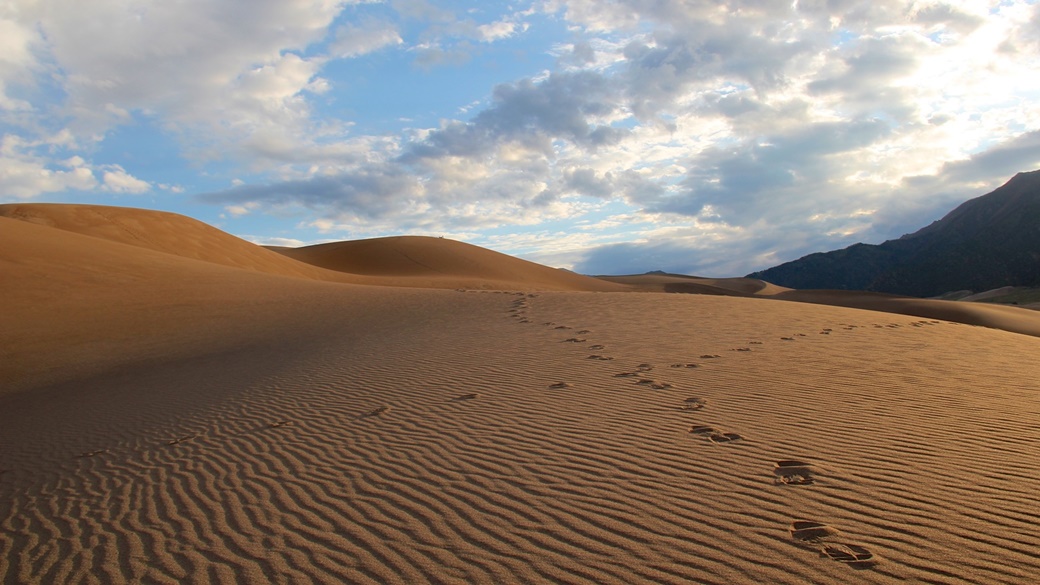
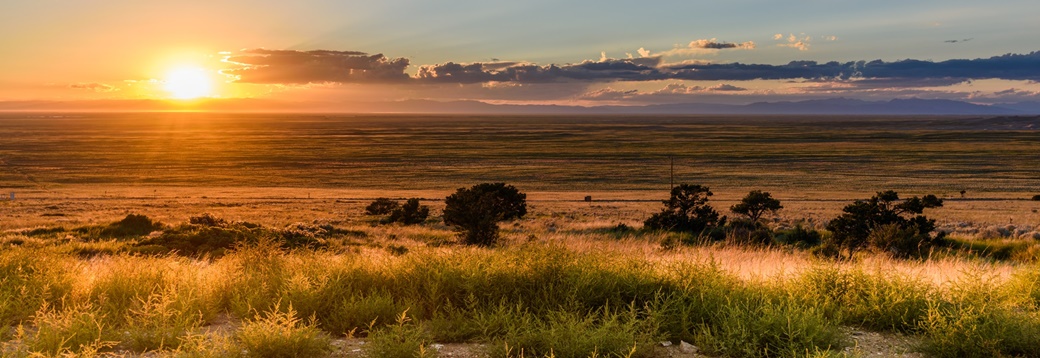
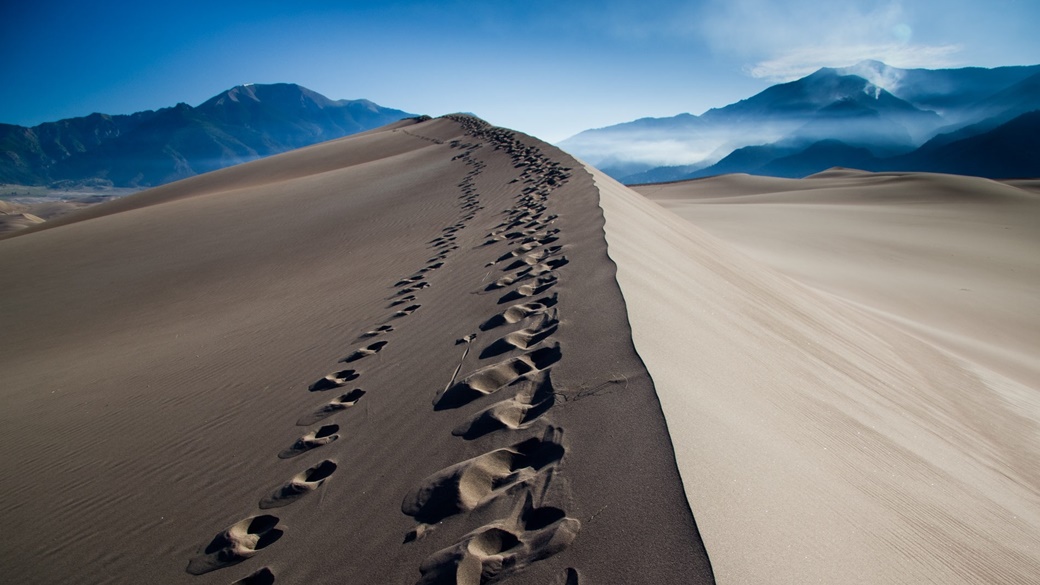
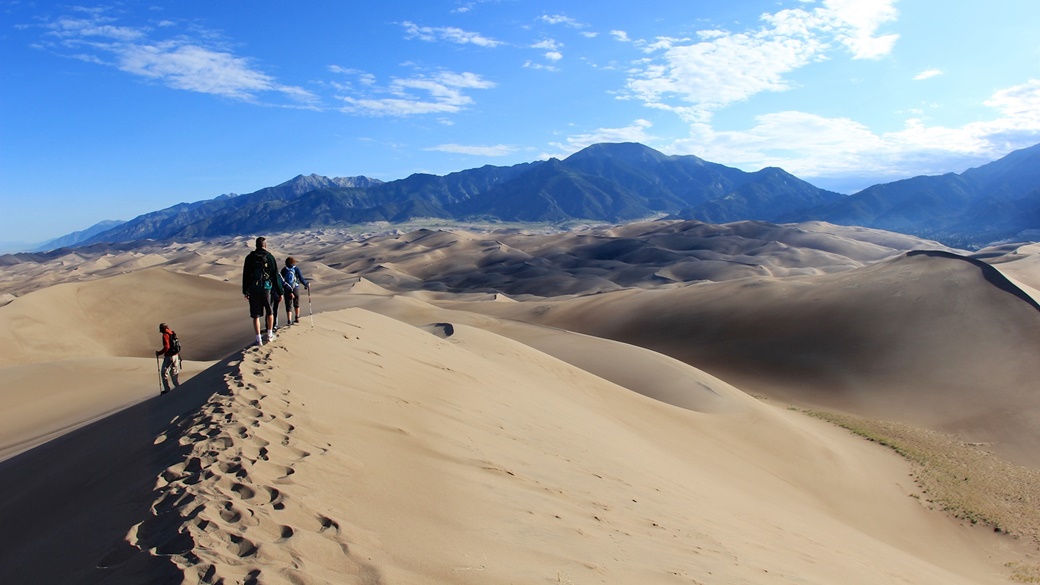
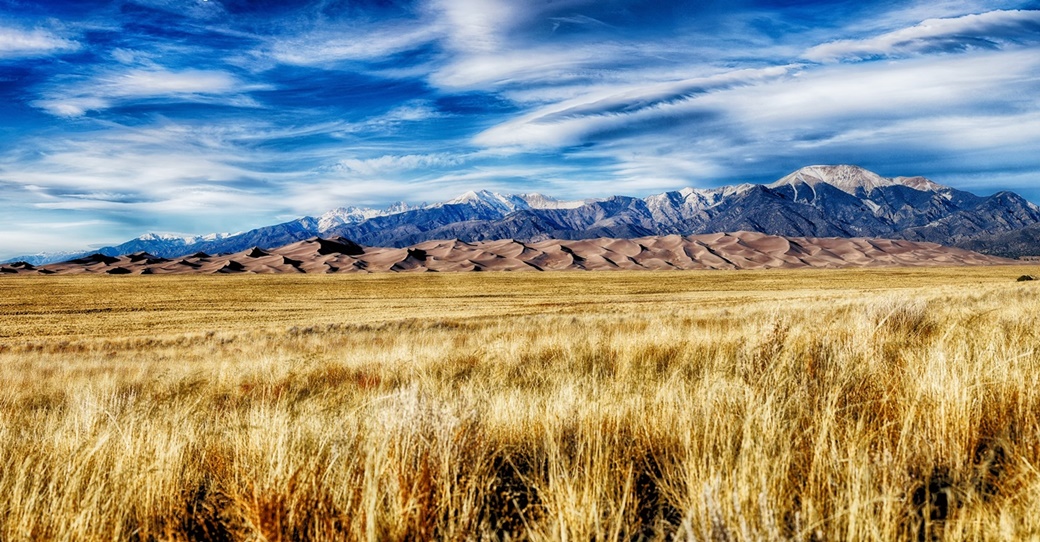
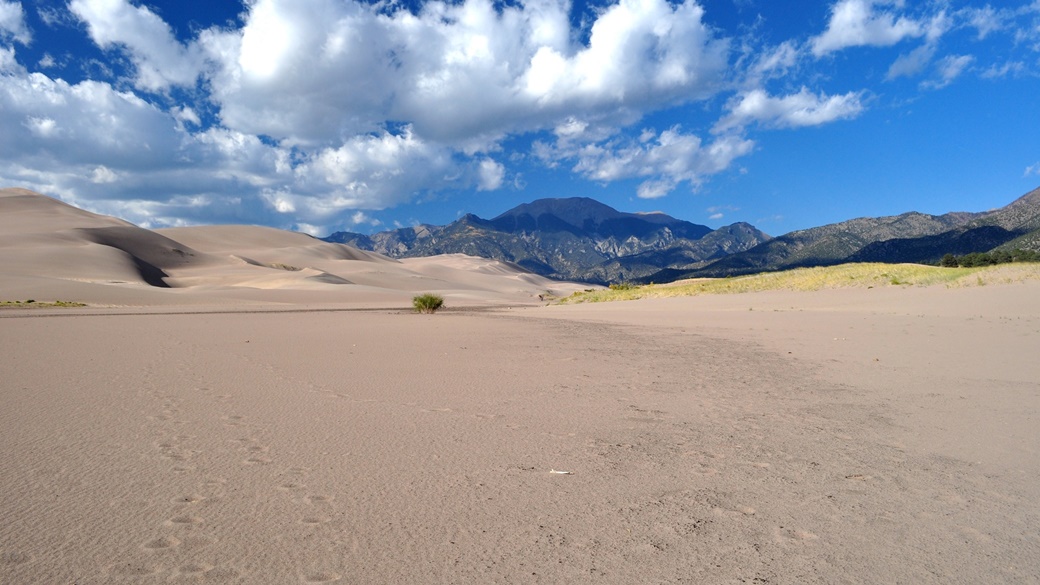
US National Parks
- National Parks of the USA – Map, List and Annual Pass
- America the Beautiful Pass 2025 – How It Works, Cost & Parks
- Timed-Entry Reservation for US National Parks (2025 GUIDE)
Travel Guides to USA National Parks

 10 Best Photo Places in the USA
10 Best Photo Places in the USA


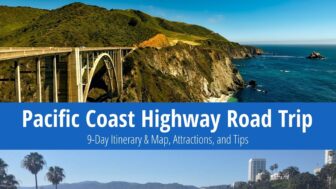

Contribute with Your Question or Personal Experience